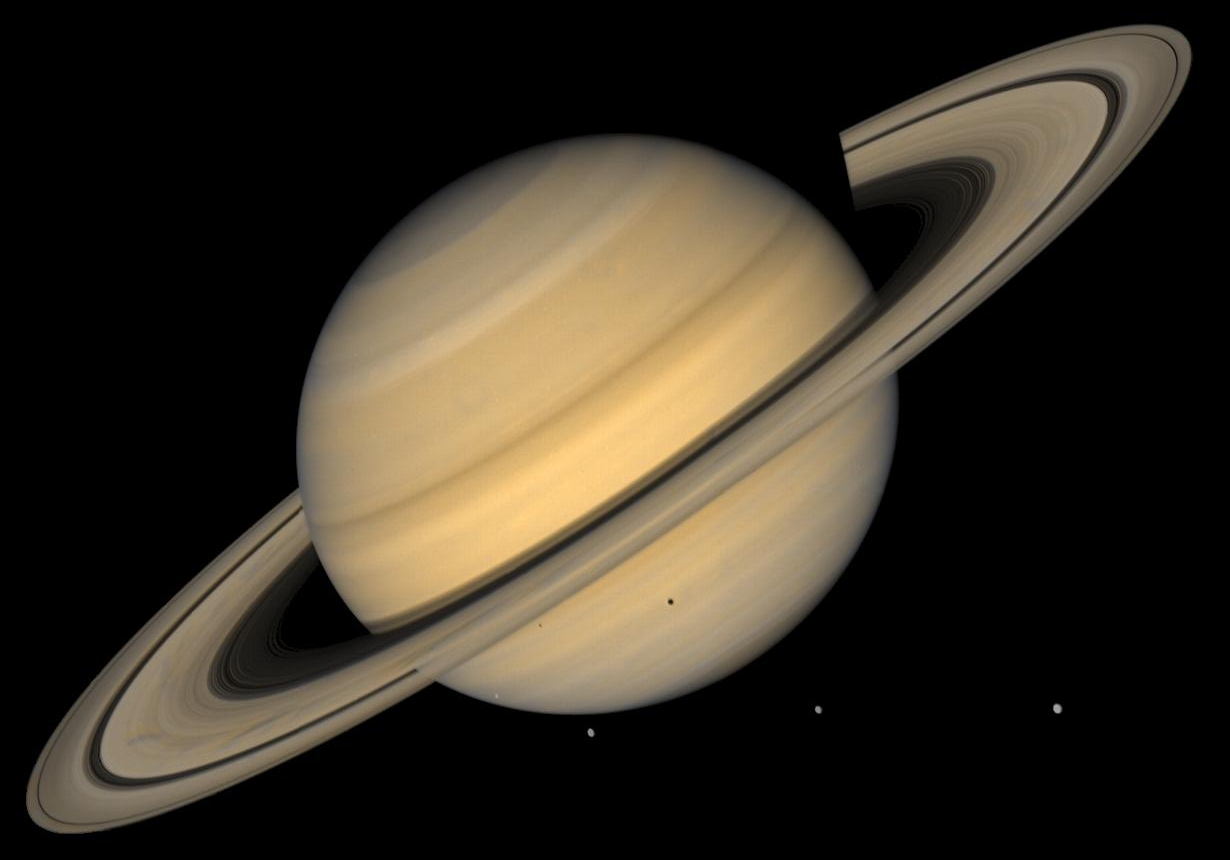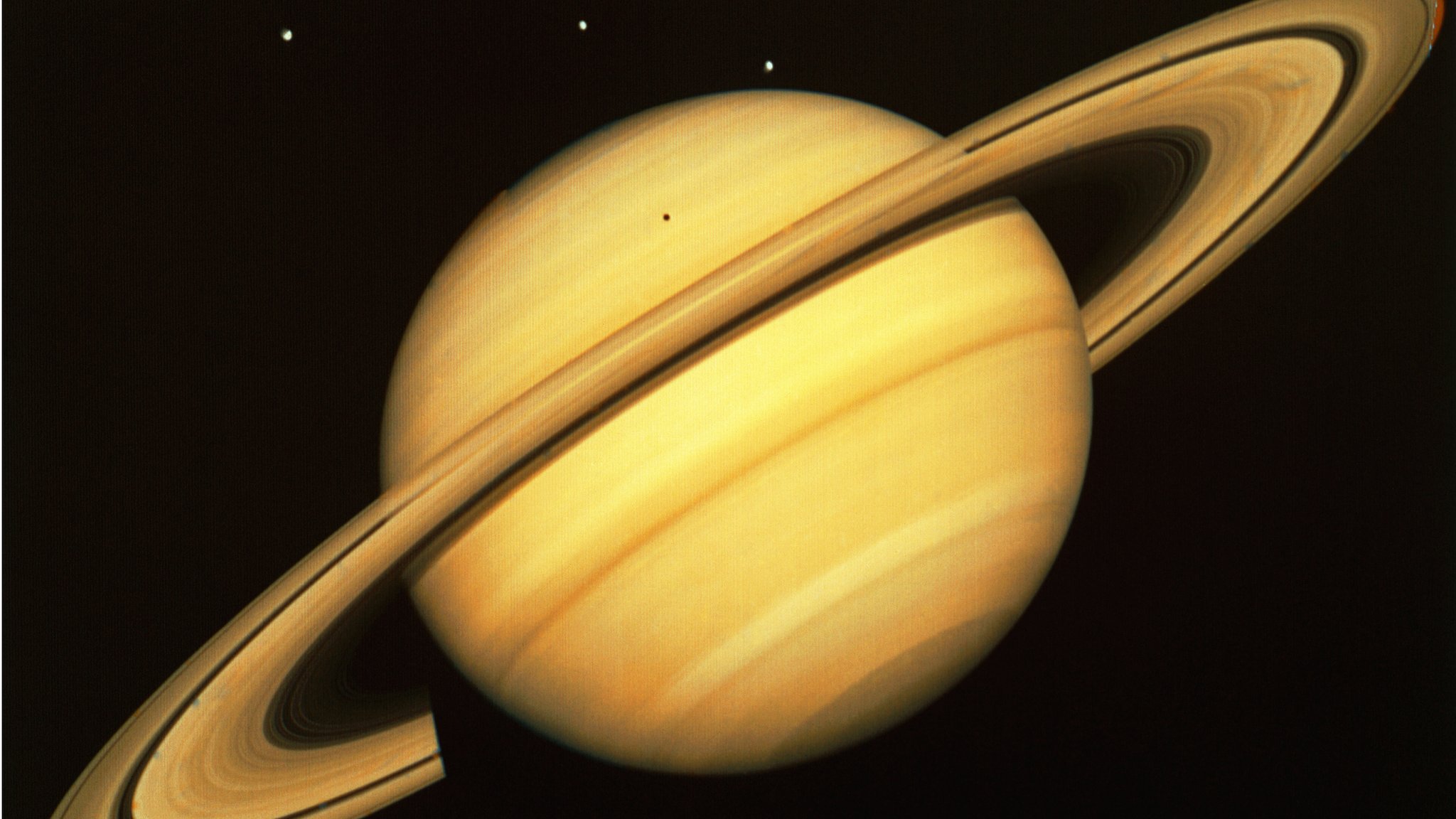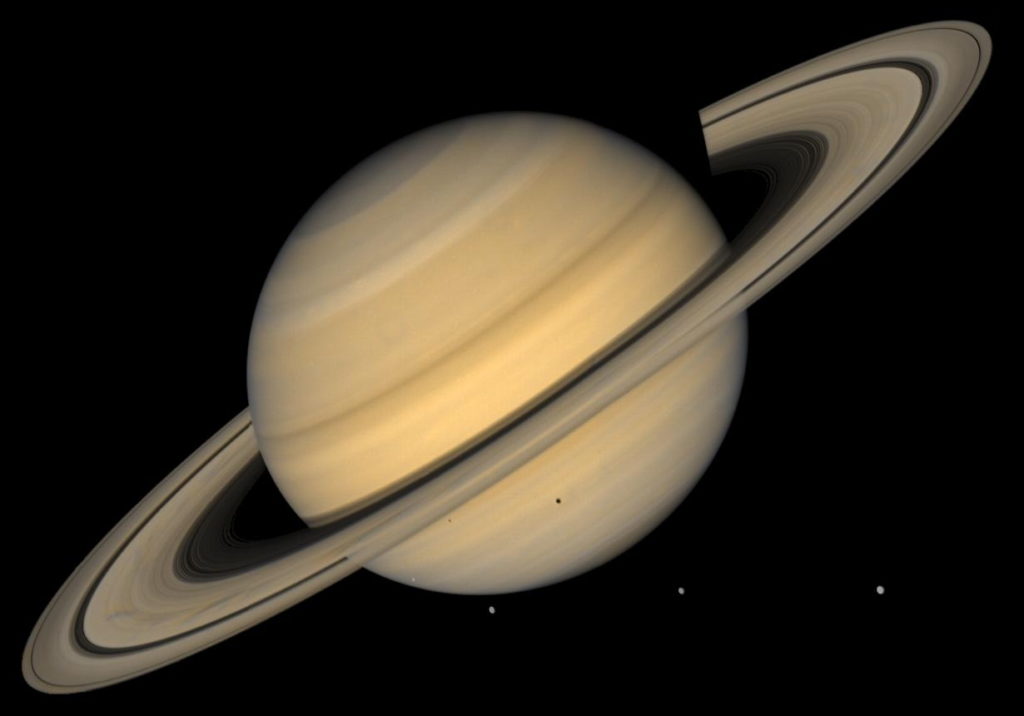Saturn In Mercury - Unraveling Console Quirks
There's something quite special, and perhaps a little bit stubborn, about certain pieces of technology that capture our hearts. Think for a moment about the Sega Saturn, a gaming machine that, in some ways, felt like an opponent, or at least a very strong-willed friend, to those who spent time with it. This old console, a true product of its moment, often presented a distinct set of challenges, almost as if it were pushing back a little. It was, in a way, like an adversary to easy, straightforward use, and that's a part of its peculiar charm, too it's almost.
This particular piece of gaming hardware, which made its mark during a period of rapid innovation, found itself in a rather fast-paced environment. The gaming scene at that time was changing very quickly, with new ideas popping up all the time. The Saturn, with its unique design and its own way of doing things, had to make its way through this quickly shifting landscape. It truly was a machine that had to find its place amidst a lot of moving parts, you know.
So, we're going to take a closer look at what made this console so memorable, exploring both its brilliant high points and the particular little annoyances that came with it. We'll chat about the games that truly shone, the physical aspects of the machine that could be a bit of a bother, and the current ways people are keeping its spirit alive through digital means. It's a tale of a system that, for many, still holds a very special spot in their memories, basically.
- Storage For Pool Toys
- Dominatrix Songs
- Dj Khaled Celebrates
- Disney Castle Cut Out
- Julie Chen Moonves Book
Table of Contents
- The Saturn's Enduring Appeal - A Look at its Core
- Hardware Hiccups and Quirks - The Saturn's Unique Personality
- Bringing the Saturn to Life - Emulation and Modern Play
- Beyond the Console - Other "Saturn" Connections
The Saturn's Enduring Appeal - A Look at its Core
When we talk about the Sega Saturn, we're really discussing a machine that, despite its ups and downs, left a significant mark on the hearts of many players. This console brought forth a collection of games that, for many, were truly unforgettable. People spent countless hours enjoying titles that truly pushed the boundaries of what was possible at the time. It’s a bit like discovering a hidden treasure chest filled with unique experiences, you know.
Some of the games that truly stood out were those that captured the imagination of a generation. Think about the speedy thrills of something like "Sonic R," or the dreamlike journeys found in "Nights." Then there were the more intense, action-packed adventures, like the futuristic battles in "Panzer Dragoon Saga" or the raw excitement of "Duke Nukem 3D." These were the kinds of experiences that truly defined what the Saturn could do, and frankly, they still hold up for many folks today.
A prime example of a game that truly excelled on this system was "Bomberman." It was, in every sense of the word, done really, really well. The multiplayer fun it offered was second to none, creating countless hours of shared enjoyment among friends. It just goes to show that when the Saturn hit its stride, it could deliver something truly special, something that many other systems struggled to match, more or less.
What Makes the Saturn in Mercury So Special?
Part of what gives the Saturn its distinct personality, especially when thinking about its place in the fast-moving current of gaming history, is the presence of games that you simply couldn't find anywhere else. There are certain titles, like the heroic brawling of "Guardian Heroes" or the intricate shooting action of "Radiant Silvergun," that were, for a long time, only truly available on this specific machine. For many enthusiasts, this exclusivity was a very big deal, actually.
To experience these particular adventures, your choices were pretty clear: either you played them on the original Sega Saturn console, or you might have found them on a digital service like Xbox Live Arcade, if they ever made their way there. For many who appreciate the original feel, the choice was simple. They preferred the actual Saturn, because for them, the experience on the original hardware was just something else entirely. It's a bit of a purist's approach, if you will, but it speaks volumes about the console's lasting appeal, as a matter of fact.
This dedication to the original console highlights a key aspect of its enduring charm. It's not just about the games themselves, but the whole experience of playing them on the hardware they were first designed for. This personal connection to the physical machine, and the unique way it presents these beloved titles, truly makes the Saturn a special item for many who remember it. It creates a bond that goes beyond just playing a game, you know, it’s a bit like revisiting an old friend.
Hardware Hiccups and Quirks - The Saturn's Unique Personality
Every piece of technology has its own little quirks, and the Sega Saturn was certainly no exception. While it offered some truly fantastic experiences, it also came with a few design choices that could, at times, make owning and maintaining it a bit of a patience test. These little oddities, while sometimes frustrating, also contributed to the console's distinct character, making it a machine with a very unique personality, in some respects.
One particular aspect that often caused a bit of a stir among owners was the console's cartridge slot. To put it simply, this part of the machine could be quite a bother. It wasn't always the most reliable spot for connecting accessories, and getting a good, solid link could sometimes feel like a real challenge. This meant that memory cards or other add-ons didn't always work as smoothly as one might hope, which, for a player eager to save their progress, could be quite irritating, frankly.
Consider the experience of trying to use a first-party Sega memory card, for instance. Someone might have picked one up from an online marketplace some years ago, only to discover that even after giving it a good cleaning, and doing the same for the Saturn's own slot, getting a consistent connection was still a struggle. It was a common tale, where you'd have to jiggle it just so, or try inserting it multiple times, just to get it to register. This kind of interaction, while a minor detail, added to the overall perception of the console's sometimes finicky nature, you know.
Beyond the physical connections, there were other small details that could impact the experience. For instance, some users might have noticed a "0 bottom light off delay" in certain situations. While this might sound like a very technical point, it speaks to the precise timings and responses of the machine. Such small elements, whether intended or not, contributed to the overall feel of the Saturn, distinguishing it from other systems of its time. It’s the kind of thing that only those who spent a lot of time with the machine would really pick up on, typically.
Is the Saturn in Mercury a Challenge to Own?
Given these little peculiarities, it's fair to ask if having a Saturn in your home today, especially when considering its place in the fast-paced world of modern technology, is a straightforward affair. For some, the answer might be a definite yes, but for others, it could present a few hurdles. For example, some exclusive content, like the "Richter and Maria campaigns" found only on the Saturn, worked just fine, offering a smooth and enjoyable experience. These moments remind us of the console's true capabilities, even with its occasional quirks, as a matter of fact.
However, even when things mostly worked, there could be small visual imperfections. Someone might have noticed "minor graphical glitching at the top letterbox" area during gameplay. While not game-breaking, these little visual hiccups were a part of the Saturn experience for some, especially when playing certain titles or using specific setups. It's a reminder that even the best systems can have their little imperfections, which, in a way, just add to their character, you know.
Then there are the environmental factors. Imagine having your Saturn stored in a garage, only for it to stop working for a couple of days because the space became "too cold." This isn't just a random question; it highlights how sensitive older electronics can be to their surroundings. Even if a test print worked initially, extreme temperatures can really throw a wrench into things. It’s a very real concern for anyone trying to keep these older machines running, honestly.
And let's not forget the simple, human element of user error. Someone might confess to putting a USB stick into the "USB power slot" instead of the correct data slot, not just once, but "the first three times." This kind of honest mistake is something many of us can relate to, showing that even with the best intentions, getting things right with older, less intuitive hardware can sometimes be a bit of a learning curve. It’s a reminder that even seasoned enthusiasts can have their moments of confusion, apparently.
Bringing the Saturn to Life - Emulation and Modern Play
For those who want to revisit the Saturn's unique library of games without tracking down original hardware, or perhaps to get around some of those physical quirks, emulation has become a very popular route. This involves using software on a modern computer to mimic the console's workings, allowing you to play its games in a new way. It's a fantastic option for keeping these older titles accessible, you know, and it opens up a whole world of possibilities.
However, bringing the Saturn to life through emulation isn't always a perfectly smooth process. It can sometimes feel like a bit of a puzzle, requiring patience and a willingness to tinker with settings. For instance, getting your "Saturn bios file" in the right spot is one thing, but then realizing it needs to be renamed to 'saturn_bios.bin' is another. And then there's the game file itself, which might need to be converted from one format, like an .mds, to a .bin/.cue setup. These little steps can add up, making the initial setup quite involved, in a way.
When it comes to choosing the right tools for this task, there are a few well-regarded options. Many people find that "Retroarch," with its "Sega Saturn Kronos core emulator," offers a good starting point for playing Saturn titles. It's a widely used system that provides a lot of flexibility. However, it's worth noting that even with the best tools, some individuals have reported "nothing but struggles emulating Saturn games" with certain cores. This just goes to show that what works well for one person might present challenges for another, which is pretty common in the world of emulation, actually.
Beyond Retroarch, another emulator that comes highly recommended for Saturn games is "Redream." This particular option has gained a good reputation for its ease of use and solid performance, making it a favorite for many trying to experience these classic titles. It seems to offer a more straightforward path for those who might find other emulation setups a bit too demanding. It’s always good to have choices, especially when some systems can be so tricky to get running perfectly, isn't that right?
How Do We Experience the Saturn in Mercury Today?
So, how do we truly get to grips with the Saturn in this very moment, especially considering its place in the quickly moving stream of modern technology? Beyond direct emulation, there are other clever ways people are keeping the console's spirit alive and making its games more accessible. One such method involves using special modifications that allow for a different kind of playback. These solutions often involve hardware add-ons that change how the console reads games, opening up new possibilities for play, you know.
For example, a modification called "Pseudo Saturn Kai" can be launched directly from a device like "Fenrir." This means you can bypass some of the original console's limitations and play games from other sources. Furthermore, "Fenrir Loader Kai" can even take the place of the usual Fenrir startup program, offering a more streamlined experience. These kinds of community-driven solutions are a testament to the dedication of fans who want to make the Saturn's library as easy to enjoy as possible, basically.
The term "Pseudo Saturn Kai" itself is something that some people use to refer to these modified setups, highlighting a kind of unofficial, yet very functional, way of experiencing the console. It's a nod to the fact that while it might not be the exact original disc method, it provides a remarkably similar and often more convenient way to play. This community spirit, where people create and share tools to keep older systems alive, is a really wonderful thing to witness, honestly.
Ultimately, experiencing the Saturn today, whether through its original hardware or through clever emulation and modification, is a journey that often involves a bit of effort and a lot of passion. It's about preserving a piece of gaming history and making sure that these unique titles continue to be enjoyed by new generations of players. It's a testament to the console's lasting impact, even with all its little quirks and challenges, that so many people are still dedicated to keeping its flame burning, you know.
Beyond the Console - Other "Saturn" Connections
It's quite interesting how certain names pop up in different corners of the technology world. While we've spent a good deal of time talking about the Sega Saturn, the name "Saturn" itself isn't exclusive to that classic gaming machine. It appears in other contexts, too, sometimes referring to devices that are very much a part of our current technological moment. This shows how a name can carry different meanings and associations depending on where you encounter it, you know.
Consider, for a moment, a completely different "Saturn" device: the "Saturn 4 Ultra LCD 3D printer." This is a modern piece of equipment that has nothing to do with video games, but shares the same name. It's a very different kind of machine, focused on creating physical objects with precision. The mention of an "AI camera" that helps you "stay updated on your print progress" and "document your creations in a visually appealing way" points to a world of advanced manufacturing and digital creation. It’s a bit of a random connection, but it highlights how a single word can span such diverse technological landscapes, isn't that interesting?
This kind of modern "Saturn" device, focused on precision and visual documentation, stands in stark contrast to the older gaming console. While the console was about entertainment and virtual worlds, the printer is about bringing digital designs into the physical world. It makes you think about the different ways technology evolves and how names can be repurposed. It's a pretty neat coincidence, actually, that these two very different machines share a common identifier.
What Other "Saturn in Mercury" Devices Exist?
When we think about other "Saturn" devices, especially in the context of their place in the fast-moving currents of technology, it's clear that the name has been adopted for a range of purposes. The 3D printer is just one example, showing how the "Saturn" moniker can be linked to precision engineering and visual output. This suggests a broader theme where the name might be chosen to evoke ideas of structure, creation, or perhaps even a certain kind of stability in a rapidly changing environment, you know.
While the focus of our discussion has been firmly on the Sega Saturn console and its unique journey, recognizing these other "Saturn" devices helps us appreciate the wider world of technology. It reminds us that innovation happens in many forms and that names often carry layers of meaning, whether intentional or not. It's a good way to broaden our perspective beyond just one specific piece of hardware, and see how similar ideas might appear in different fields, in some respects.
So, while you might not rush out to buy a 3D printer unless you have a very specific need for one, just knowing that these other "Saturn" devices exist adds a little bit of flavor to the conversation. It shows how a name can resonate across different technological spaces, each with its own set of functions and challenges. It's a nice little tidbit that connects the dots between various pieces of hardware, apparently.

Saturn Fact Sheet

Saturn: Five things we've learnt in the last five years - CBBC Newsround

Saturn